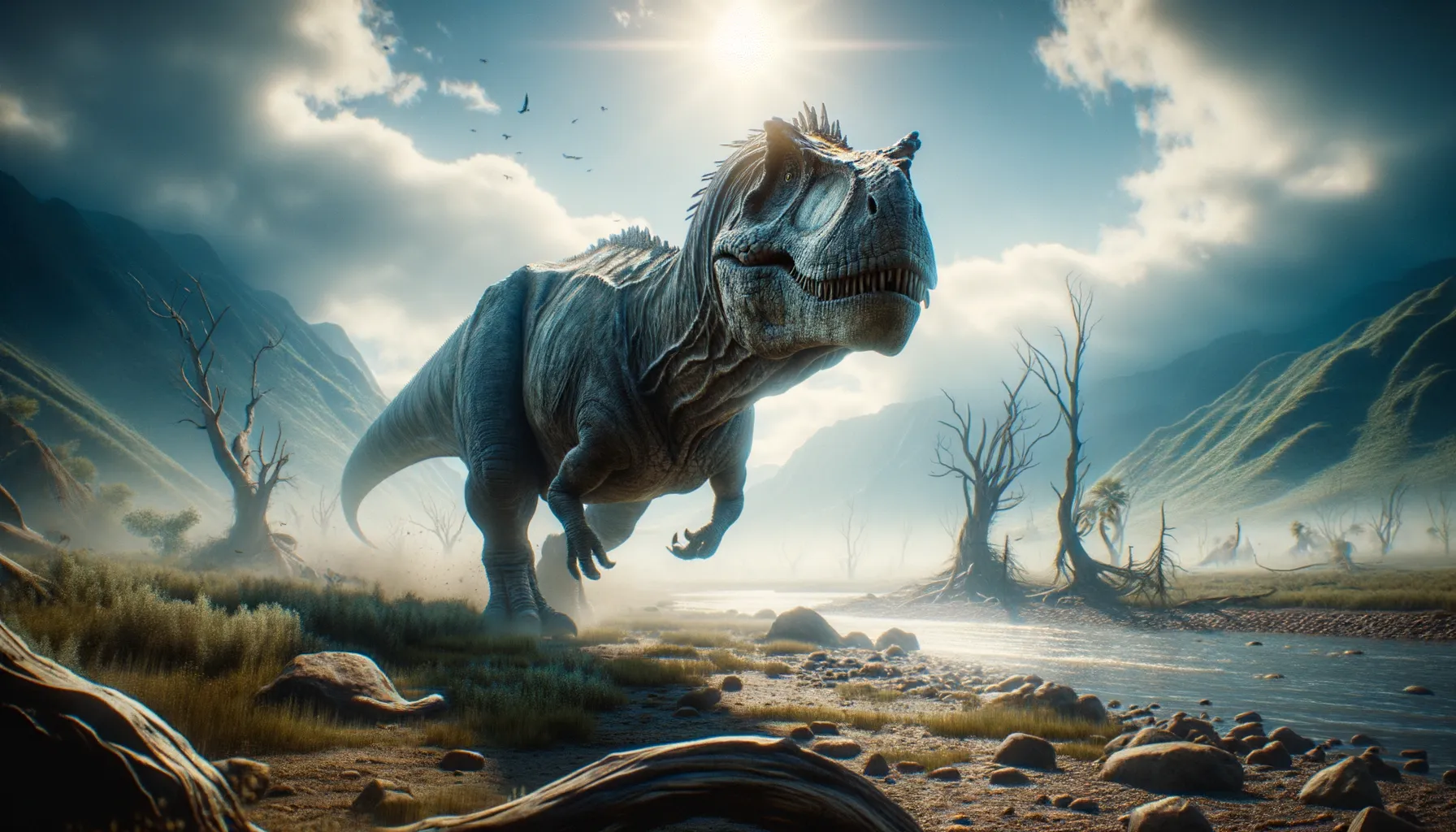
Teratosaurus
A fierce predator from the dawn of reptiles.
Period
Triassic
Length
Up to 6 meters in length.
Height
Around 2.5 meters tall.
Weight
Approximately 600 to 800 kilograms.
Teratosaurus was a large predatory reptile that roamed the Earth during the late Triassic period. Although initially thought to be a dinosaur, it was later identified as a kind of rauisuchian, closely related to crocodiles and birds. Its robust and formidable build suggests it was a dominant predator of its time, preying on smaller animals and competing with other large reptiles.
Diet
Teratosaurus was primarily carnivorous, feeding on smaller reptiles and other contemporary animals. Its sharp teeth and strong jaws suggest it was well-adapted to seize and consume a variety of prey, making it a formidable hunter in its ecosystem.
Hunting
As an apex predator, Teratosaurus likely employed ambush and quick strike tactics to capture its prey. Its keen sense of smell and acute vision would have helped it track and hunt effectively during both day and night.
Environmental challenges
Teratosaurus lived during a time of significant climatic shifts, with fluctuating temperatures and changing habitats. These changes required adaptability in diet and hunting strategies as new species emerged and older ones disappeared. The environment also posed challenges such as competition with other large predators and environmental catastrophes such as volcanic eruptions.
Speed
Likely agile but not exceptionally fast.
Lifespan
Estimated around 20 to 30 years.
First discovery
First discovered in the 1860s in Germany.
Fun Facts
- Teratosaurus was not actually a dinosaur but a prehistoric reptile known as a rauisuchian.
- It lived during the Late Triassic period, around 210 million years ago.
- The name 'Teratosaurus' means 'monster lizard' due to its large and fearsome appearance.
- Teratosaurus was a carnivore and likely a top predator in its ecosystem.
- It had a massive skull and powerful jaws equipped with sharp teeth.
- Fossils of Teratosaurus have been primarily found in Germany.
- Teratosaurus may have walked on both two legs and all fours, indicating it was quite versatile.
Growth and Development
Young Teratosaurus likely grew rapidly to reduce vulnerability to predators. They would have undergone changes in body structure as they matured, developing the characteristics needed for hunting and surviving independently. The growth stages might have required a diverse diet to support their developing bodies.
Habitat
Teratosaurus thrived in semi-arid environments with sparse vegetation, where open spaces allowed for effective hunting pursuits. It inhabited regions near water sources, which attracted a variety of prey. These areas also experienced seasonal changes, influencing the availability of resources and shaping the survival strategies of Teratosaurus.
Interaction with other species
Teratosaurus competed with other carnivorous reptiles for resources, possibly engaging in territorial disputes. Its presence likely controlled populations of smaller species, influencing the ecological balance. It may have coexisted with herbivorous species without significant conflict, except when preying on the young or weak.
Natural lifespan
Teratosaurus could live around 20 to 30 years naturally.
Reproduction
Reproduction involved laying eggs in nests similar to those of modern reptiles. Parental care, if any, was limited, with young Teratosaurus hatching ready to fend for themselves. The reproductive cycle may have been influenced by environmental factors, ensuring that offspring hatched during favorable seasons.
Social behaviour
Teratosaurus was likely solitary, relying on its strength and predatory abilities. Territorial instincts may have led to aggressive encounters with others of its kind. Its social interactions were probably limited to mating periods, where brief partnerships formed to ensure the continuation of the species.
Fossil locations
Fossils of Teratosaurus have primarily been found in Germany, offering insights into its structure and lifestyle. The discovery of fossils in a few other European sites suggests a wider distribution during the Triassic. These fossils have been crucial in understanding the early diversity of archosaur predators before the dominance of dinosaurs.
